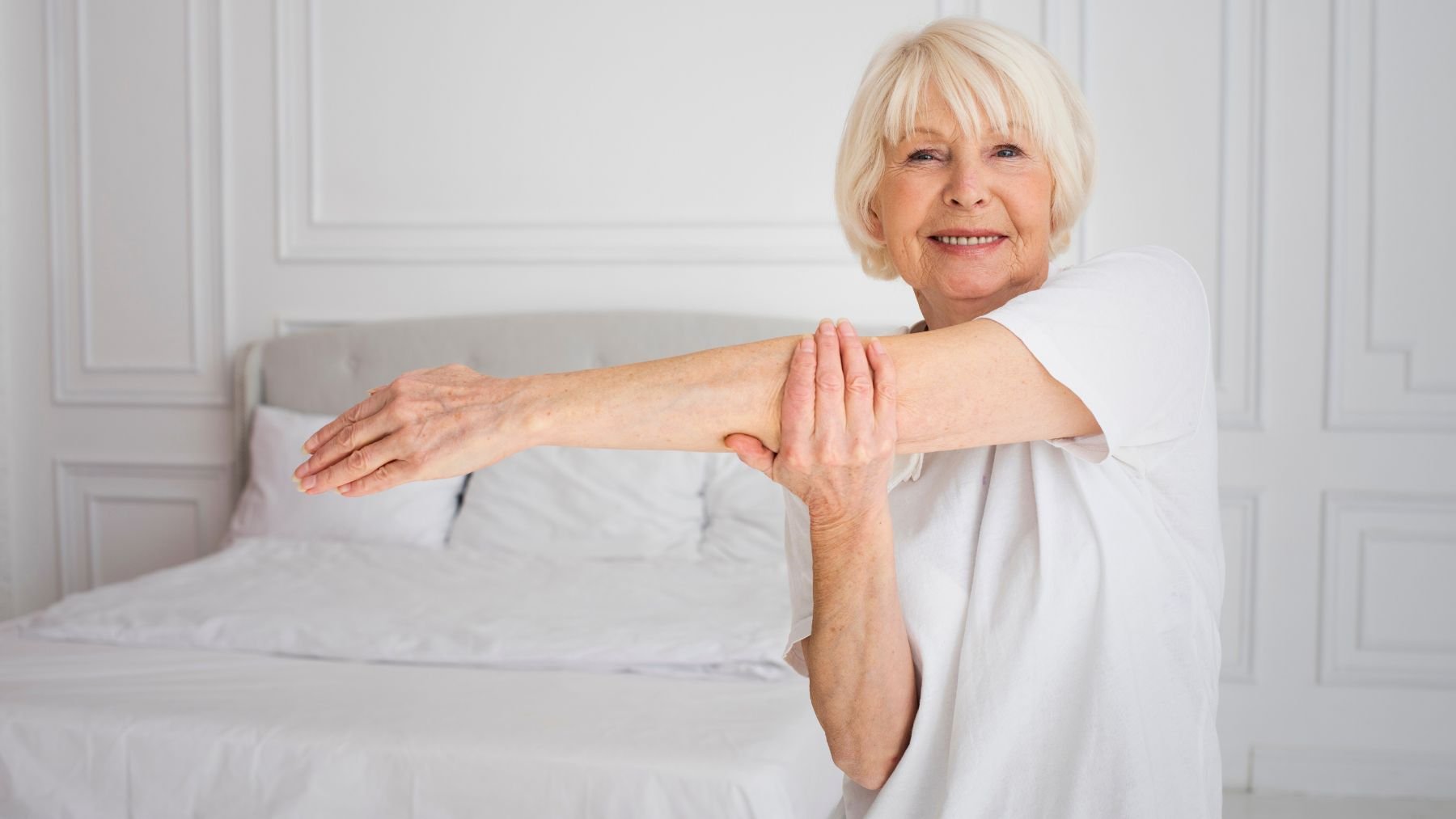If joint pain has made practices like pilates or cycling feel out of reach, there is a gentler option that still delivers significant results. Yoga offers a sustainable way to remain active while avoiding undue strain on aging joints. This ancient discipline complements other activities such as tai chi, physical therapy, and mindfulness meditation to create a holistic approach to wellness.
Here, we’ll explore why yoga stands out for older adults managing joint issues. You’ll learn how its adaptable movements work to improve mobility, reduce stiffness, and support long-term health. We’ll also share practical tips to help you start safely, even if you have never tried yoga, chair yoga, or restorative yoga before.
Yoga, the top low-impact exercise for seniors with joint pain
For older adults, yoga prioritizes fluid motions to protect vulnerable areas while building strength and stability. Let’s break down its benefits in detail.
It lubricates stiff joints
By gently stretching the muscles and tendons surrounding your joints, yoga increases blood flow and promotes natural lubrication for cartilage and connective tissue. This improved circulation helps reduce the creakiness and stiffness that many seniors experience as they age. Incorporating sequences such as the cat-cow pose or slow neck rolls can relieve stiffness in minutes.
It builds strength
Yoga uses bodyweight resistance to build muscle strength, minimizing stress on fragile joints. Poses like chair (a modified squat) and warrior II (a wide-legged stance) work to develop core, leg, and arm muscles in a controlled environment. This focus on strength without strain helps stabilize critical joints such as the knees, hips, and lower back, lowering the risk of falls.
It improves balance
By incorporating one-legged poses, such as tree pose (standing on one foot), you can train your body to recover from minor wobbles with ease. Improved balance is especially crucial for those affected by conditions like osteoporosis, arthritis, or age-related instability. By focusing on mindful weight shifting and engaging the core, you’ll build better proprioception and reduce the likelihood of falls.
It soothes aching muscles
Restorative yoga poses are carefully designed to ease tension and discomfort in muscles that have been overworked in compensation for joint pain. For example, the legs-up-the-wall pose, which involves lying with the legs vertical, can relieve pressure on the lower back and hips. Paired with deep breathing, this technique helps calm muscle tension and promotes relaxation.
It supports heart health
Flowing sequences, such as a slow sun salutation, incorporate continuous movements that gradually raise your heart rate. Over time, these rhythmic motions help to improve circulation, reduce blood pressure, and support overall cardiovascular health. In addition to benefiting the heart, regular practice of these sequences links the mind and body, perfect for those seeking a combination of aerobic exercises and relaxation.
How to start yoga safely after 65
Beginning a yoga practice requires minimal gear but thoughtful planning to ensure safety and enjoyment. Follow these steps to establish a routine that works for you:
- Consult your doctor or therapist. Before starting, confirm with your doctor or physical therapist that yoga is appropriate for your specific joint issues.
- Choose the right class for you. Look for classes specifically designed for seniors or those seeking low-impact work, such as gentle yoga, chair yoga, or senior yoga sessions. Steer clear of more intense options like power yoga or hot yoga at the start.
- Use props liberally. Props such as blocks, straps, and folded towels are excellent aids for modifying poses to match your comfort level. For instance, placing a block under your hand during a triangle pose can help prevent overstretching.
- Prioritize breathing over depth. Focus intently on coordinating your breath with your movements. Inhale deeply as you extend into a stretch and exhale to release tension. If you encounter any discomfort, gently ease out of the pose.
- Start with short sessions. Consistency is more important than lengthy exercise routines. Begin with 10-minute sessions two to three times per week, and gradually increase the duration as your body adapts.
- Focus on seated poses if needed. If standing poses are too challenging initially, consider incorporating chair yoga into your routine. Seated twists, shoulder stretches, and other gentle movements provide full-body benefits without the need for floor work.
By respecting your body’s limits and integrating supportive practices such as balance training, gentle stretching, and mindful breathing, you can develop a sustainable routine that helps maintain healthier joints in the long run.

